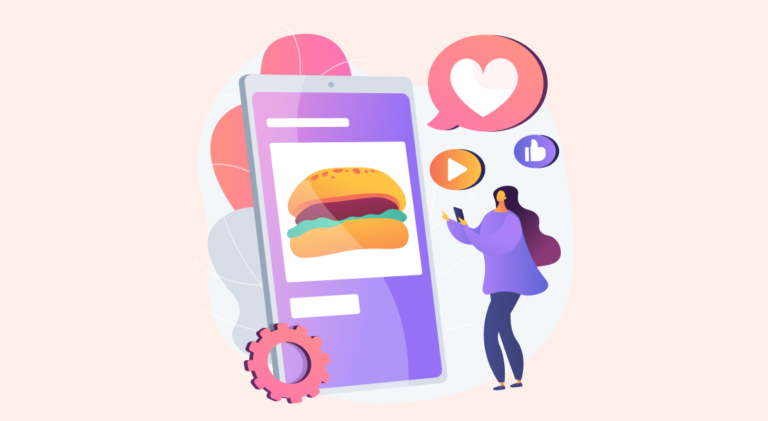Headline Writing Tips: How to Create Winning Homepage Headlines in 8 Steps

Table of Contents
- Steps to Write a Winning Headline
- Examples of Winning Headlines
- Conclusion
- FAQs
There’s no denying the importance of website content. It is the vessel that imparts value to the visitor. However, even before a visitor can derive value from it, the primary goal of the website is to be viewed. However, nobody is going to be viewing it if the headline on a particular web page doesn’t grab their attention. The headline essentially markets the content or product. While attractive images and designs do lure in readers, the headline/title of the homepage is often the first thing that stands out. It gives prospective visitors a taste of what the rest of the content offers. It is the lighthouse that guides the browser towards the metaphorical shore that is the content.
This article about headline writing tips will give you a stepwise guide to help make your headlines captivating enough to turn casual browsers into website visitors. We have also provided some examples to get your motor running.
Steps to Write a Winning Headline
Follow along as we show you how to write a good headline.
Step 1: Understand the content
Unless you’re the creator of a product or piece of content, it’s possible that you don’t already have a holistic idea of what is to be marketed. It is, therefore, extremely important to familiarize yourself with the content. Otherwise you could be missing out on crucial aspects of the content that make it more marketable. The homepage headline will be defined by the most marketable features of the product.
Step 2: Think from a consumer’s perspective

You may have an idea that is relevant to the content/product but it may not always translate, and the consumer may not understand it. This is because you are already familiar with the content while the reader is not. There’s a risk of the headline being like an inside joke between you and the webpage, that no one else really gets. It may be difficult to disconnect from the content in that sense, so it may help to elicit opinions from peers.
If your website already has an established audience, it could be helpful to do some research on what kinds of headlines have worked best for similar content.
Step 3: Focus on value and not just reach
Although it is important to consider readers’ interests when crafting your headline, remember that you can’t draw everybody’s attention. People have diverse interests and you can’t cater to them all. For example, if you previously tested two headlines and 80% of visitors responded to the funny headline and 20% to the one that was straightforward, you don’t want to use that information to set the precedent for future headlines.
Think about the nature of the content/product and what kind of audience it caters to best. The holistic translation of the product into the headline is what’s most important. It could be useful to collect voluntary information about the audience such as age, gender, occupation etc., and use it to efficiently cater to the groups that are most likely to respond or make a purchase.
Step 4: Make a list of the most marketable aspects of the product
As stated earlier, the headline is essentially a tool to market products. It is, therefore, important to highlight the most desirable aspect of what is being offered. Once you’ve made assessments of your audience, think about what the most valuable thing you can offer them is. This is one of the most important steps, so spend some time enlisting the following points:
- The features of the product
- Its uniqueness
- The problems that it solves
- The value that it provides
Once you’ve enlisted these, you’re going to have to perform the difficult task of deliberating.
You don’t have to finalize your heading yet, but based on the above parameters, you need to have a good sense of what will work and what won’t.
Step 5: Shortlist variations
Now that you’ve zeroed in on what the unique selling proposition (USP) of the product is, note down all the different ways in which you can frame it as a headline. They do not all have to be winners. Sometimes, you have to run the tap for a while before the murky water flows out. Don’t write any of them off. Just focus on coming up with as many as you can. Here are some tips to help expand your options.
Experiment with length
It is suggested that a headline of about six words is ideal, but clean, simple titles are more important than length.
Experiment with vocabulary
Another important headline writing tip is to experiment with words. It’s best to refrain from using words that are fancy and inaccessible, but use your discretion and make use of vocabulary that will elevate your headline.
Use numbers
Incorporating numbers into a headline makes it more attractive. For example, write “5 Helpful Gardening Techniques” rather than “Helpful Gardening Techniques”.
Experiment with tone
Try crafting formal, informal, humorous, or straightforward variations of the same headline, and determine what works best.
Step 6: Narrow your options down
This is one of the most important headline writing tips. The headlines you have listed at this point are certainly not all top-tier, so it’s time to delete the obviously bad ones. Here are some examples of the ones that can be done away with:
Excessively long headlines
This is quite relative, but you can certainly delete the ones that are greater than about 10 or 15 words in length.
Corny headlines
Maybe it was a failed attempt at humour or cleverness but some of them just feel wrong and don’t fit into the narrative.
Complicated headlines
Clumsy sentence constructions, vocabulary that warrants a dictionary, and usage of jargon—all come under this category.
Step 7: Keyword research
Now that you’ve narrowed down your headline options, you can tastefully incorporate the keyword(s) into the headlines. SEO keywords are words and phrases that make it possible to find a particular web page via search engines. Incorporating these keywords into your headline will make your page more visible to people browsing for similar content. You must conduct a thorough research to figure out what keywords work best.
Step 8: Testing
Testing helps you choose content that works best in the eyes of the consumer. You certainly won’t be able to test more than two different options simultaneously, so if you’re left with more than two at this point, you will have to pick the two that you think have the best potential to attract engagement.
Not only does this allow you to figure out which headline works best for that particular web page, but it will also help you get a feel of customers’ interests. You can then take note of these preferences and use them to your advantage while crafting subsequent headlines. There are several digital marketing platforms that provide built-in A/B testing tools, such as Visual Web Optimizer. Alternatively, you could perform testing before keyword research and then run a secondary A/B test after incorporating the keyword.
Examples of Winning Headlines
Here are some examples of engaging headlines that you can refer to.
1. Weight Watchers

This homepage headline by Weight Watchers invites engagement by being simple and adding a touch of personalization.
2. Miracle Brand

This one gets straight to the point and clearly outlines the pain point that the product/service addresses.
3. Colibri

Here is an example of a great headline that succinctly conveys what the product is about, while keeping it fun and engaging.
4. Ellevest

The appeal of this headline lies in its power to intrigue the group towards which it is directed, i.e., women.
Conclusion
This blog was an attempt at succinctly covering the steps involved in writing a winning homepage headline and talking about some of the great headline examples. Remember, the homepage is the first form of brand introduction your reader has access to. So make sure you keep it engaging, crisp, relevant, and powerful. Also, always be on the lookout for headline writing tips to up your game, and your website’s hit counter is sure to start working overtime.

FAQs
A homepage headline is the title that appears on the homepage of your website. Since the homepage is one of the primary elements of a website, you need to ensure that a homepage headline is short, catchy, and relevant.
In order to write a good headline, you must know the product in and out. You should then assess the type of content at hand, and your target audience. Come up with a list of headlines and perform A/B testing with them. You can then pick one that suits your content and audience best.
Some headline writing tips are as follows:
1. Keep it short and concise.
2. Avoid using convoluted sentences and jargon.
3. Make sure your headline is relevant to the content.
4. Always come up with a list of variations before you select one.
5. Incorporate relevant keywords into the headline for ranking purposes.
You should avoid writing headlines that are excessively wordy, confusing, ill-structured, long, or too informal
Latest Blogs
Learn how to rank on AI search engines like ChatGPT, Perplexity, and Gemini by optimizing your content for authority, structure, and relevance. Stay ahead in AI-driven search with this strategic guide.
Explore the best healthcare SEO services for your medical practice. Improve online visibility and effectively reach more patients in need of your services.
Discover top social media agencies specializing in banking solutions, enhancing financial services and driving engagement.
Get your hands on the latest news!
Similar Posts

Artificial Intelligence
5 mins read
Top AI Blog Writing Tools for Website Monetization

Blogging
10 mins read
How to Start a Successful Food Blog in 2022

Blogging
4 mins read